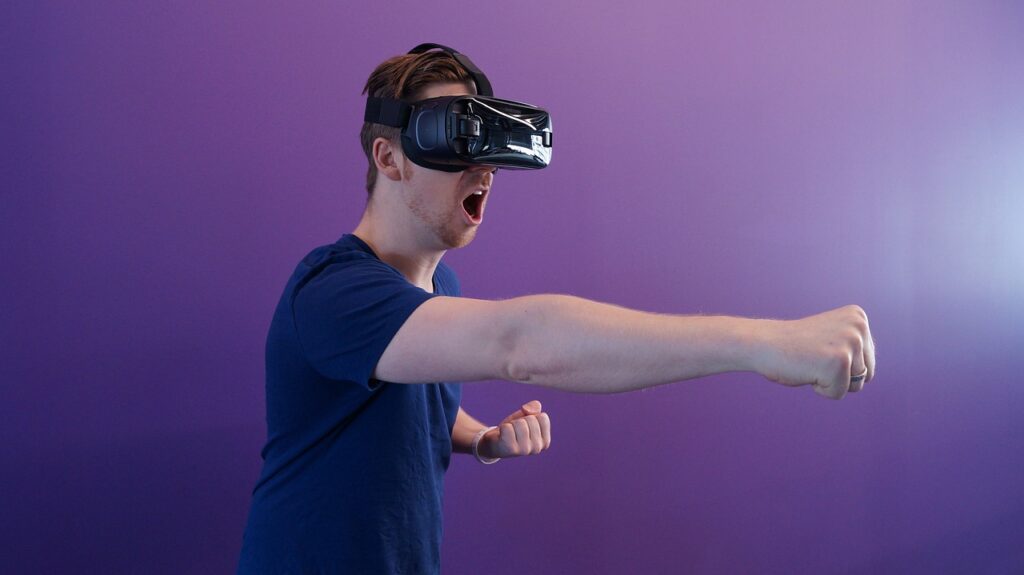To Share is to Show You Care!
Virtual and Augmented Reality (VR/AR) are rapidly growing technologies that have the potential to change the way we interact with the digital world. These technologies provide an immersive experience that blends the real and virtual worlds, creating a new form of human-computer interaction. In this comprehensive guide, we will take a closer look at what VR and AR are, how they work, and their numerous applications.
What is Virtual Reality (VR)?
A. VR is a computer-generated simulation of a three-dimensional environment that can be interacted with in a seemingly real manner by a person.
B. VR devices, such as head-mounted displays, use sensors and tracking systems to monitor the user’s movements and adjust the virtual environment accordingly.
C. VR can be used for gaming, training, and therapeutic purposes, among others.
What is Augmented Reality (AR)?
A. AR is a technology that superimposes digital information, such as graphics and text, onto the physical world.
B. AR can be experienced through devices such as smartphones and tablets with cameras, or specialized head-mounted displays.
C. AR has a wide range of applications, including education, marketing, and entertainment.
Applications of VR/AR:
Gaming: VR/AR can provide a more immersive gaming experience by allowing players to interact with virtual environments in a more intuitive way.
Healthcare: VR/AR can be used for medical training, therapy, and even surgeries.
Education: VR/AR can create interactive and engaging learning experiences by bringing subjects to life.
Retail and Marketing: AR can be used for product visualization and interactive advertisements.
Real Estate: VR/AR can provide virtual tours of properties, giving potential buyers a realistic experience of a property before visiting it.
Challenges and Limitations of VR/AR:
Cost: High-end VR/AR devices can be expensive, limiting accessibility for many consumers.
Health Concerns: Prolonged use of VR/AR devices can cause discomfort and even physical health problems such as eye strain and headaches.
Technical Limitations: VR/AR technology is still in its early stages and has yet to reach its full potential, facing limitations in terms of graphics quality and the level of interactivity.
So, what is the future of VR/AR:
The future of VR/AR is promising, with the technology continuing to advance at a rapid pace. Here are some of the key trends and developments that we can expect to see in the coming years:
Improved User Experience: VR/AR devices will become more comfortable and user-friendly, with improved tracking systems and more intuitive control systems.
Increased Adoption: As VR/AR technology becomes more accessible, we can expect to see widespread adoption in various industries, including gaming, education, and healthcare.
Greater Interactivity: VR/AR devices will become more capable of detecting and responding to user movements, allowing for more immersive experiences.
Development of Standalone Devices: Standalone VR/AR devices, which do not require a connection to a computer or smartphone, will become more common, making VR/AR more accessible to a wider audience.
Expansion into New Industries: VR/AR will continue to expand into new industries, including automotive, construction, and tourism, among others.
VR and AR are technologies with boundless possibilities, offering a new form of human-computer interaction that is more immersive and intuitive. Whether it’s for gaming, education, or healthcare, the applications of VR and AR are limitless, and the future is exciting. With the rapid advancements in VR/AR technology, it is only a matter of time before these technologies become widely adopted in our daily lives, changing the way we interact with the world.
In this blog post, we’ve explored the basics of Virtual and Augmented Reality and their numerous applications. We have also discussed some of the challenges and limitations that VR/AR face, but despite these challenges, the potential of VR/AR is immense, and the possibilities are endless. As VR/AR technology continues to evolve and mature, we can expect to see more and more innovative applications in the future.
Conclusion
In conclusion, VR and AR are technologies with boundless possibilities and have the potential to change the way we interact with the world. With the rapid advancements in VR/AR technology, it’s only a matter of time before these technologies become widely adopted in various industries and our daily lives. Whether it is for gaming, education, or healthcare, the applications of VR and AR are limitless, and the future is exciting.
The Informed Minds
I'm Vijay Kumar, a consultant with 20+ years of experience specializing in Home, Lifestyle, and Technology. From DIY and Home Improvement to Interior Design and Personal Finance, I've worked with diverse clients, offering tailored solutions to their needs. Through this blog, I share my expertise, providing valuable insights and practical advice for free. Together, let's make our homes better and embrace the latest in lifestyle and technology for a brighter future.

